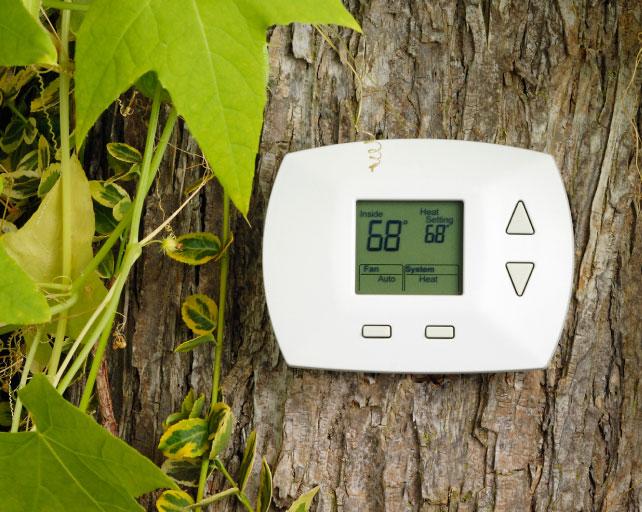Biggest HVAC Upgrades by Seasoned Homeowners
These expert recommendations offer valuable guidance for homeowners looking to enhance the performance and efficiency of their HVAC systems year-round.
As seasoned homeowners know, maintaining a comfortable and energy-efficient home is never-ending. When it comes to heating, ventilation, and air conditioning (HVAC) systems, making the right upgrades can significantly impact your comfort and energy bills.
This article will look at some of the most significant HVAC upgrades experienced homeowners make to ensure their homes remain cozy, efficient, and cost-effective. We'll also explore implementing HVAC zones for precise temperature control, adopting programmable thermostats for energy efficiency, ductwork upgrades to enhance airflow and strategic home insulation improvements.
Knowing When to Upgrade Your HVAC System
Knowing when to upgrade your HVAC system is crucial for homeowners wanting to maximize comfort and cost savings. These key indicators may mean it's time for an upgrade.
- If your HVAC unit is over 10-15 years old, it's likely becoming less efficient and may need an upgrade to maintain your desired comfort levels.
- Frequent breakdowns and costly repairs may signal that your system is on its last legs.
- Rising energy bills can indicate an outdated, inefficient HVAC system.
- Inconsistent heating or cooling in different parts of your home, it may be time to explore upgrades like HVAC zones or ductwork upgrades
- Technology and energy efficiency advancements may mean a newer system can significantly reduce energy consumption and environmental impact.
To make an informed decision, it's often wise to consult an HVAC professional who can assess your system's condition and recommend the most suitable upgrade options for your home and needs.
HVAC Upgrades to Consider
HVAC Zones: Tailoring Comfort Room by Room
One of the most impactful HVAC upgrades seasoned homeowners are making is the implementation of HVAC zones. HVAC zoning allows homeowners to control the temperature in different areas of their homes separately, creating personalized comfort zones.
Why HVAC Zones?
HVAC zones offer a range of benefits, including
Energy Efficiency
Zoning helps reduce energy consumption by only heating or cooling the areas that are in use. Unused rooms can be maintained at a different temperature than frequently occupied ones.
Customized Comfort
Each member of your household might have different temperature preferences. With HVAC zones, you can accommodate everyone's needs.
Extended System Lifespan
By reducing the workload on your HVAC system, you can extend its lifespan and reduce the likelihood of breakdowns, ultimately saving on repair and replacement costs.
How to Implement HVAC Zones
Implementing HVAC zones involves dividing your home into separate areas with independent temperature control. Here are the steps to create HVAC zones:
Zone Planning
Identify the areas in your home that you want to zone. These can include living spaces, bedrooms, and even specific frequently used rooms, such as home offices.
Zoning Equipment
Invest in zoning equipment like motorized dampers, thermostats for each zone, and a zone control panel. These components work together to regulate the temperature in each zone.
Professional Installation
Hiring a professional HVAC technician is a must for properly installing zoning equipment. They will ensure the system works seamlessly and can be controlled through a central interface or a smartphone app.
Programmable Thermostats: Smart Control for Energy Efficiency
Seasoned homeowners are increasingly adopting programmable thermostats or, even better, smart thermostats to enhance the energy efficiency of their HVAC systems. Programmable thermostats allow for automated temperature adjustments based on schedules, while smart thermostats offer remote control and advanced features.
Why Programmable Thermostats?
Energy Savings
Programmable thermostats can lower the temperature when you're away from home or asleep, helping you save on energy bills.
Convenience
Set it and forget it. Once your thermostat is programmed, it will manage the temperature in your home without constant manual adjustments.
Environmental Impact
Reducing energy consumption saves money and reduces your carbon footprint.
How to Choose a Programmable Thermostat
When selecting a programmable thermostat, consider the following factors:
Compatibility
Ensure the thermostat is compatible with your HVAC system. Most modern thermostats work with a wide range of systems, but it's essential to double-check.
Features
Look for features that match your needs. Basic models offer scheduled programming, while more advanced ones include Wi-Fi connectivity, learning capabilities, and energy usage tracking.
Ease of Use
The thermostat should be user-friendly. A complicated interface defeats the purpose of convenience.
Energy Star Certification
Consider thermostats with the Energy Star label, indicating that they meet energy efficiency standards.
Ductwork Upgrade: Enhancing Airflow and Efficiency
For those with central HVAC systems, ductwork is important in distributing conditioned air throughout the home. Seasoned homeowners often opt for ductwork upgrades to enhance airflow and efficiency.
Why Ductwork Upgrades?
Improved Airflow
Ductwork upgrades can resolve airflow issues, ensuring that conditioned air reaches all areas of your home evenly.
Energy Efficiency
By reducing air leaks and improving insulation, your HVAC system won't have to work as hard to maintain the desired temperature, resulting in energy savings.
Air Quality
Sealing and insulating ducts can help prevent contaminants from entering the system, leading to better indoor air quality.
How to Upgrade Ductwork
Improving your home's ductwork involves several steps:
Inspection
Have a professional HVAC technician inspect your existing ductwork to identify any leaks, poor insulation, or blockages.
Sealing and Insulation
Seal any gaps or leaks in the ducts and add insulation if needed. This helps prevent conditioned air from escaping and reduces energy waste.
Duct Design Optimization
Optimizing the duct design may be necessary to ensure balanced airflow. This can involve adding or resizing ducts to distribute air better.
Professional Installation
Ductwork upgrades are best handled by experienced professionals who can ensure the work is done correctly.
Home Insulation: Keeping Comfort In and Costs Down
The insulation in your home is critical to maintaining a comfortable indoor environment. Seasoned homeowners recognize the importance of strategic home insulation to keep the desired temperature in and outdoor conditions out.
Why Home Insulation?
Energy Efficiency
Adequate insulation prevents heat from escaping during the winter and keeps hot air out during the summer, reducing the workload on your HVAC system.
Consistent Comfort
Proper insulation helps maintain a stable indoor temperature, avoiding hot and cold spots in your home.
Soundproofing
Insulation can also reduce noise, making your home more peaceful and comfortable.
How to Improve Home Insulation
Insulation Types
Choose the right insulation type for your home. Common options include fiberglass, cellulose, foam, and reflective insulation. The choice depends on your specific needs and budget.
Attic Insulation
Insulating the attic is often the most effective way to improve energy efficiency. Heat rises, so a well-insulated attic can make a substantial difference.
Wall Insulation
If your home's walls lack insulation or need an upgrade, consider blown-in or foam insulation.
Window and Door Sealing
Ensure that windows and doors are properly sealed to prevent drafts. Weatherstripping and caulking can help in this regard.
Professional Assessment
Consider hiring an energy auditor to assess your home's insulation needs. They can identify areas that require improvement and provide recommendations.
Contact Your Local Trane Comfort Specialist
Experienced homeowners understand the significance of investing in HVAC upgrades. From implementing HVAC zones for precise temperature control to adopting programmable thermostats for energy efficiency, ductwork upgrades for enhanced airflow, and strategic home insulation improvements, these upgrades offer a myriad of benefits. Not only do they enhance comfort, but they also lead to substantial energy savings over time.
A little investment in your HVAC can go a long way in making your home a more comfortable and cost-effective place to live. So, whether you're gearing up for winter or preparing for the summer heat, consider these HVAC upgrades to enjoy a cozy, efficient home year-round.
Contact a Trane Comfort Specialist today and see how HVAC upgrades can keep comfort in and costs down year-round!




